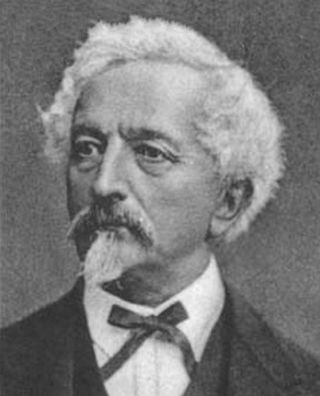
Ascanio Sobrero was an Italian chemist, born in Casale Monferrato. He studied under Théophile-Jules Pelouze at the University of Turin, who had worked with the explosive material guncotton.

Achille Costa was an Italian zoologist working mainly in entomology who was appointed director of the Zoological Museum of Naples. He founded the entomological collections in Naples and described many new species.
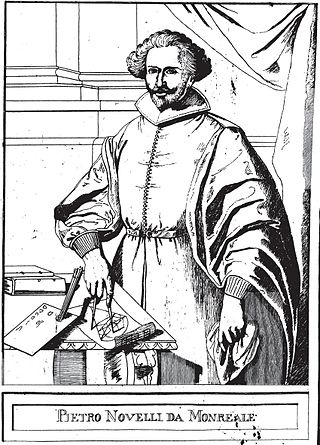
Pietro Novelli was an Italian painter of the Baroque period, active mainly in Palermo. Also known as il Monrealese or Pietro "Malta" Novelli to distinguish him from his father, Pietro Antonio Novelli I. He was also nicknamed by contemporaries as the Raphael of Sicily.
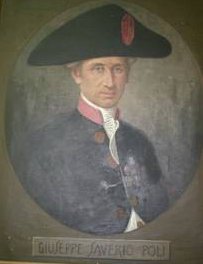
Giuseppe Saverio Poli was an Italian physicist, biologist and natural historian.
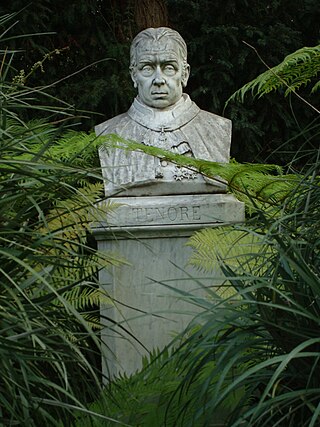
Michele Tenore was an Italian botanist active in Naples, Italy.
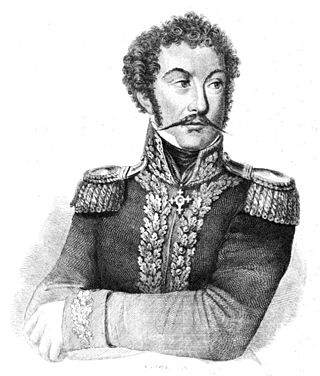
Giuseppe Maria Rosaroll-Scorza was an Italian essayist and a general in the army of the Kingdom of the Two Sicilies. He was also the father of the Italian patriotic hero Cesare Rosaroll.
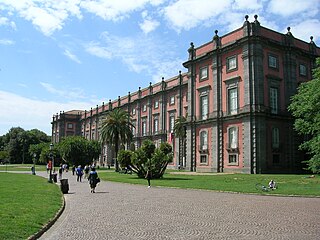
The Royal Palace of Capodimonte is a large palazzo in Naples, Italy. It was formerly the summer residence and hunting lodge of the Bourbon kings of the Two Sicilies, one of the two royal palaces in Naples. Today, it comprises the National Museum of Capodimonte and the Royal Forest. The palace was constructed on its somewhat cooler hilltop location just outside the city, with urban Naples ultimately expanding around it.

Carlo Troya was a historian and politician who served as Prime Minister of the Two Sicilies from 3 April 1848 until 15 May 1848. Politically, he was a liberal Neo-Guelph who supported Italian unification. His primary historical interest was the study of the Early Middle Ages, to which he made lasting contributions.

The following is a timeline of the history of the city of Naples. The Naples area has been inhabited since the Neolithic period. The earliest historical sources in the area were left by the Myceneans in the 2nd millennium BC. During its long history, Naples has been captured, destroyed and attacked many times. The city has seen earthquakes, volcanic eruptions, foreign invasions and revolutions.
Tito Angelini (1806–1878) was an Italian sculptor and leader of the Academy of Fine Arts in Naples, where he was born and died.

Michelangelo Naccherino was an Italian sculptor and architect, active mainly in the Kingdom of Naples, Italy.

The Cemetery of Poggioreale is one of the major cemeteries in Naples, Italy. It is also known as Camposanto Nuovo, to distinguish it from Camposanto Vecchio, which is now known as Cemetery of the 366 Fossae. It is bordered by the Largo Santa Maria del Pianto, Via del Riposo, Via Santa Maria del Pianto, and via nuova Poggioreale, and is built upon the ruins of Alphonso II's Villa Poggio Reale.
Raffaele Mattioli was an Italian painter, active in his native Naples.
Gennaro Calì was an Italian sculptor.

Luca de Samuele Cagnazzi was an Italian archdeacon, scientist, mathematician, political economist. He also wrote a book about pedagogy and invented the tonograph.

Simone De Wobreck was a 16th-century Flemish painter, whose known works all come from his long period in Sicily.
The Diocesan Museum of Palermo is a museum of religious art in Palermo on Sicily, housed in a number of rooms in the Palazzo Arcivescovile opposite Palermo Cathedral.
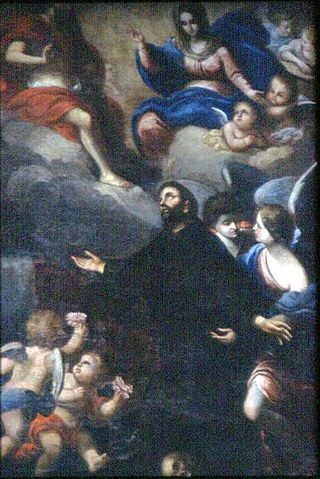
Andrea Carrera or Carreca was an Italian Baroque painter mainly active in Sicily. He was born in Trapani and died in Palermo.














